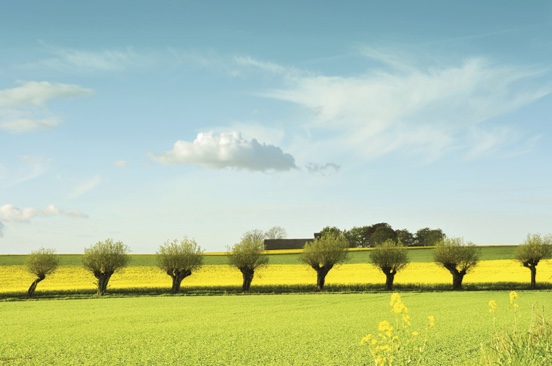Solutions
Climate and nature
Action to fight climate change helps protect the nature around us and the natural systems that we all depend on. By taking good care of our soil, forests and waters, we can also better tackle climate change and its consequences.
Climate change impacts our environment and society in many ways. Many EU countries have already prepared national plans to address these impacts. As different regions will face different problems, these plans have to be adapted to regional and local situations.
Soil’s super carbon store
Most of us consider the soil beneath our feet as just dirt, but it plays an essential role in regulating the world’s climate. Soil stores carbon, mainly in the form of organic matter, and is the second largest carbon pool on Earth, after the oceans.
It is estimated that 0.1 % of the carbon currently stored in European soils is the equivalent of the annual emissions from as many as 100 million cars.
The ability of soil to keep hold of the huge amounts of carbon it stores has been weakened in recent decades, largely due to unsustainable land management practices and changes in land use. However, good forestry practices and good land management can help maintain or even increase the amount of carbon held in the ground.
Storing carbon underground
Carbon capture and storage is a technique which traps carbon dioxide emitted by power plants and industrial factories, compresses it and then transports it to a suitable storage site deep under the ground.
This has significant potential to help the fight against climate change in Europe and around the world: underground sites can store virtually all of the carbon dioxide for hundreds, even thousands of years.
However, the technology is currently very expensive and there are only two commercial projects operating in Europe. Therefore, the EU is providing seed funding to support carbon capture and storage projects and has created rules to ensure the technique is used in an environmentally-friendly way.
Forests: our climate protectors
Forests play a unique role in climate change. On one hand, they release greenhouse gases when trees are cut down or decay or when the soil underneath is disturbed, contributing to global warming.
On the other hand, forests capture greenhouse gases through photosynthesis and they also help to cool the planet. This makes them crucial in the fight against climate change.
How can we ensure forests have a positive effect? Sustainable management of forests, whereby new trees are planted to replace old ones or those that have been cut down, can be an effective solution. EU countries are working together to improve the role of forests in EU action against climate change.
Humans are cutting down the world’s forests at an alarming rate: up to 80 % of tropical deforestation is done to clear land for farms, but trees are also being cut down to make products such as timber and paper or to build roads and mines. As well as speeding up climate change, deforestation destroys the habitats of forest animals and changes rainfall patterns, causing droughts.
Protecting global forests
A scheme called REDD+ (Reducing Emissions from Deforestation and Forest Degradation plus conservation) helps tropical countries adopt more sustainable practices by paying people in developing countries to preserve their forests.
It does this by calculating the value of carbon prevented from entering the atmosphere by not cutting them down, and converts this into funds for climate-smart use of forest land.
REDD+ money has been used in more than 40 countries, for example, on forest monitoring (measuring trees), improving fire-service response to forest fires, and developing the agro- forestry industry (a mix of farming and forestry).
It is a careful balancing act between conservation and protecting the interests of those who live in and rely on the forest for food, water and other resources. EU member states and institutions have so far contributed over EUR 1 billion to activities related to REDD+ in Africa, Asia and Latin America.
Tackling the heat
Smart planting
Some farmers are planting more crops among trees for shade to cope with the hotter, drier climate. In cities, landscapers are introducing drought-tolerant flowers and shrubs in parks and along roadsides that can cope with warm, dry conditions.

Green walls and roofs
A number of cities are growing plants on walls and roofs to absorb heat and help control the temperature inside buildings when it is hot. They also absorb water and reduce run-off during storms. Some countries, such as France and Denmark, have put in place laws and programmes to encourage the installation of green roofs.

Water wise
Some people are finding novel ways to save water, for example by installing ‘grey-water’ systems in homes and businesses (such as hotels) that reuse water from washing to flush toilets. And innovative farmers are using trickle irrigation at night so that plants get water straight to their roots without it evaporating in the heat of the day.



